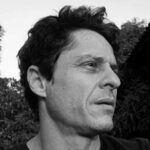Roberio Catelani Carneiro is an Architect and Urbanist who graduated from the Federal University of Rio de Janeiro in 2000. In 2001, he won the Mario Olla Scholarship from CEDIT – Centro Difusione Imprenditoriale della Toscana in Florence, Italy, for Restoration of Wood and Carpentry. From 2004 to 2009, he taught the Physical Models course at the Federal University of Rio de Janeiro and served as a consultant and collaborator in the construction of models for the “Casas Brasileiras do Séc. XX” research project, developed by Architect and PhD in Architecture Beatriz Oliveira. In 2006, he worked as a project coordinator at AAA – Azevedo Agência de Arquitetura, developing restoration projects such as the Church of Nossa Senhora da Glória do Outeiro and the Barão de Mauá – Leopoldina Station, among others. Currently, he is a professor of the Physical Models course at the Pontifical Catholic University of Rio de Janeiro (PUC-Rio) and at Universidade Santa Ursula. In 2014, he completed his postgraduate course in Technologies in Higher Education at PUC-Rio. Among other activities, he runs his own workshop, developing models and objects for architects and designers, in addition to offering courses for students and professionals in the field.
